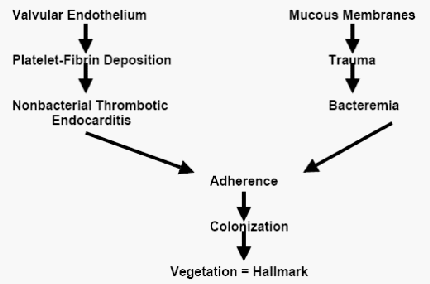(also known as Bacillus Friedlander) is a small (0.5-0.8 x 1-2 mm), Gram-negative kokkobatsill causing necrotizing lobar pneumonia. Do not form spores, motionless. Opportunity to create a capsule. Organised alone, in pairs and clusters. Easily colored aniline dyes. Klebsiella pneumonia refers to the normal intestinal flora of humans. Typically, the bacterium is not dangerous in people with weakened immune systems or in weakening other infections may occur as pathogens. The most common diseases are infections in this case, urinary tract and respiratory tract. The bacterium responsible for nosocomial pneumonia in immunoincompetent known stationary patients. Bacteria also produce 10% of all nosocomial infections, including pneumonia and
urinary tract, biliary tract and surgical wounds. Carriers face a particular risk among hospital staff, especially when strains of K. pneumonia
colonization of the oral cavity, pharynx and intestine. Factors are catheters and endotracheal tubes,
age alcoholism, diabetes

,
immunosuppression,
congestive heart failure, >> << chronic obstructive pulmonary disease and other serious diseases. The combined death rate from primary and secondary Klebsiella pneumonia is 50% due to necrotizing pneumonia, in itself dangerous, because the victims tend to chronically ill and debilitated, otherwise. Clinically, pneumonia is a sudden onset, characterized by fever, pain, cough and expectoration of thick mucus, when the infection is serious progress these symptoms of respiratory failure, cyanosis and death within 2 to 3 days. Patients with Klebsiella pneumonia tend to cough up phlegm property called "red currant jelly like." Klebsiella ranks second only to Escherichia coli urinary tract infections in elderly people. In addition, pathogenic micro-organisms in patients with chronic pulmonary diseases, intestinal pathogenicity, nose and Mucosaatrophie rhinoscleroma. Remains the most important source of infection the patient, after contact with contaminated instruments. Members of the class Klebsiella usually express two types of antigens on the cell surface. The first O antigen is LPS, which consists of nine varieties. The second antigen to the capsular polysaccharide of more than 80 varieties. And contribute to the pathogenicity and form the basis for subtypes. Pneumonia develops when bacteria invade and multiply in the alveolar spaces. Klebsiella pneumonia is more common due to beta-lactamase resistant to penicillin and ampicillin. In addition, bacteria belonging to ESBL-producing strains (ESBL = extended spectrum beta-lactamase), and thus increasingly more resistant to many broad steps of antibiotics such as cephalosporins or ceftazidime. Lung parenchyma is consolidated and mucous secretions filling alveoli predominate macrophages, fibrin and edematous fluid. Neutrophils inhibited neutral polysaccharide capsule of K. pneumonia, and is an important part of early fluid. Many Gram-negative encapsulated appear free in the fluid and alveolar macrophages. As fluid accumulates in the alveolar wall are compressed and then necrotic. Numerous small abscesses may merge and lead to cavitation. Research conducted at King College, London has a tendency to molecular mimicry between HLA-B27 and the two molecules in Klebsiellamikroben means strattera dosage that the cause of Bekhterev's disease. Many of these infections can be achieved when a person is in hospital for another reason. The most common infections caused by Klebsiella bacteria outside the hospital is pneumonia. Photo Klebsiella pneumonia strain on McConkie agar number 3 after 24 hours incubation at 37 ° C. Notice the pink colonies because of lactose fermentation and mucosal appearance. Pneumonia or other infection C. pneumonia may be complicated by fulminant, often fatal, sepsis, widespread slaughter, but not in other tissues. .
No comments:
Post a Comment